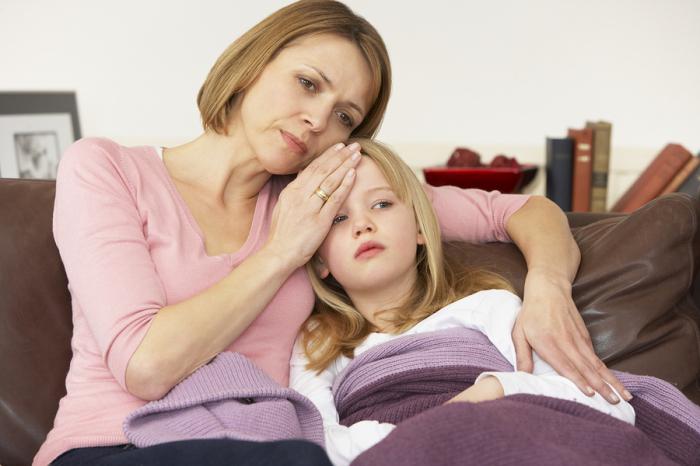The temperature readings of the human body can provide some information about its health. During the day, the level of the thermometer can rise and fall several times. At the same time, no additional concerns arise.
If an adult does not pay attention to such fluctuations, then the situation in children is somewhat different. Anxious parents notice that the child has a temperature of 37 without symptoms and immediately attribute a cold to him. But not always it is she who causes such a reaction. To eliminate subfebrile indicators, you need to know what exactly triggered their appearance.
Thus, for most parents, it remains the best alternative to high speed jumping. For older children, we need an armpit thermometer. You would make a nice potty with a baby. Dress lightly at temperatures. Cover him with a blanket or cool slightly, depending on how this happens. When the core temperature rises, she has a hot sleep and forehead, neck, but often cold legs and arms. This is the stage where it starts to hiccup, but it feels mostly in winter.
Cover with a breathable blanket and measure temperature regularly. Don't worry too much about 38.5 degrees fast drug delivery, especially if the temperature is "slowly rising." But when he has 39 and still cold feet and hands, it means that the temperature will rise. This is the signal for the delivery of coagulation drugs. Don't forget that you need to rest. If you put a suppository in your butt, it will "work" in about 20 minutes, if you give it to your child in syrup, it can take about an hour.
Causes of low-grade fever in children without symptoms
To talk about the reasons for the increase in temperature in children, it is necessary to indicate what is the norm. It is considered to be an ideal thermometer indicator that fits into the range of 36.4 - 36.6 degrees. But not all children have it. Variation in body temperature values \u200b\u200bfrom 35.6 to 36.9 degrees does not apply to pathology. And for babies, the permissible upper limit is 37.5 degrees.
During this time, the temperature may rise, so be sure to count on 39 degrees to "guide" the medicine. Of course, do not rely only on auxiliary procedures - olive oil in water with a temperature of up to two coolers than a child's core temperature, well-worn vinegar socks. The least drastic method is winding up the core by rubbing the arteries of the arteries - wiping the cheeks, neck, forehead, arms and legs with a kettle, not ice! We don't do full-body cooling when the acres are cold.
This is the time of the growing fever, when the child is rather cold, although he is over. When the temperature rises, we keep the baby warm. We only begin to cool down when the fever reaches its maximum - both the palms and the soles of the feet are hot. We can help a little time before taking the flu shot.
The body's natural reactions to external stimuli
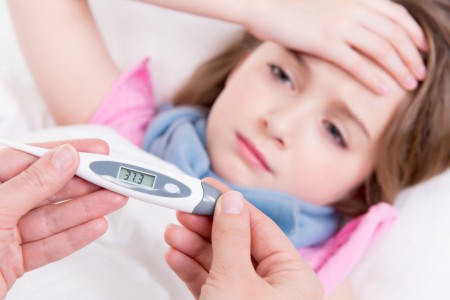 If a child has a temperature of 37.2-37.4 without symptoms, then excessive physical activity may be the cause. Remember what the baby did before the measurement?
If a child has a temperature of 37.2-37.4 without symptoms, then excessive physical activity may be the cause. Remember what the baby did before the measurement?
If the baby jumped, ran, played active games or even spoke loudly, then this may be the reason.
The advantage is that both groups can be combined with each other, since each has a different mechanism. Pediatricians, however, recommend starting treatment with one of these drugs along with gentle cooling of the heart and only then combining the two groups. Paracetamol preparations act mainly to reduce fever, somewhat on pain, while ibuprofen is additionally anti-inflammatory and also relieves pain. Therefore, in case of extreme urgency, if the child has a fever of 39 degrees or more and returns quickly, you can give the second group medicine after 3 hours.
Measurements should not be taken immediately after activity, as the results cannot be considered indicative. Temperature is diagnosed in the child's armpit only after 20-30 minutes of rest... A slight increase in values \u200b\u200bcan occur even after a meal, especially hot and with a lot of spices. To others natural reasons subfebrile temperature include:
For example: in a child 39, we give ibuprofen at a dose relative to the child's weight. After an hour, the temperature drops, after an hour and a half, the child begins to ache, his arms and legs cool. 3-4 hours after the administration of the ibuprofen drug, we can give paracetamol. And after 3-4 hours, ibuprofen, etc. When the temperature fluctuates and after 2-3 hours rises by 39-40 degrees. Do not expect medications to "normalize" the temperature - it will reduce it by 1 - 1.5 degrees. If you tried to hold it, with stable temperature fluctuations, febrile convulsions could occur in children of a predisposed age.
- warm clothes and being in a hot room (especially in children of the first year of life);
- eruption of deciduous teeth (may periodically occur up to 2 - 2.5 years);
- exposure to the sun, heatstroke (can occur in children of different ages).
What diseases can cause fever?
The fact that the temperature is 37.7-37.9 without symptoms in a child may also indicate a pathological process in the body. Its origins can be very different. Most often, children are faced with subfebrile conditions due to a cold, viral or bacterial infection. These include:
Why does it shake? Febrile seizures can occur with rapid onset of fever, sharp rise temperature or, conversely, the excessive efforts of parents to reduce their combination of drugs and wraps. They usually take a few seconds, but maybe two minutes. If you are experiencing them, do not lose your head. One of you will hold the child and protect him so that he does not interfere with the surrounding objects, the second will be a rescue worker who will help you immediately upon arrival and relieve the child of the injection or suppository.
If you have any of these, you probably have diazepam at home and know not only how to give it, but also how to properly reduce your fever. If your child has a fever, do not try to digest food at any cost. Consumption of fluids and vitamins is essential. Fluids should be slightly larger than you are used to. First of all, if vomiting or diarrhea is added to the fever, fluid delivery is critical to inhibiting dehydration. It is also an excellent ionic rehydration drink.
- pharyngitis and nasopharyngitis;
- rhinitis, sinusitis, sinusitis;
- eustachitis, otitis media;
- tonsillitis;
- laryngitis, tracheitis;
- bronchitis, pyelonephritis.
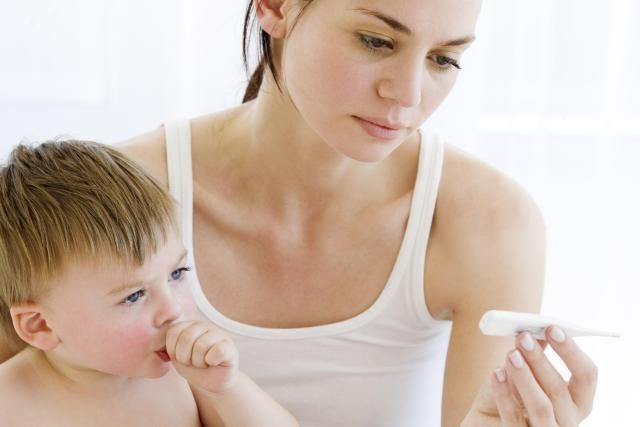 It is these diagnoses that are most often attributed to children with a fever up to 37.9 without additional symptoms.... Other signs may be simply invisible to parents. For example, with otitis media, the ear hurts, and with tonsillitis - the neck, but the child cannot correctly explain his condition.
It is these diagnoses that are most often attributed to children with a fever up to 37.9 without additional symptoms.... Other signs may be simply invisible to parents. For example, with otitis media, the ear hurts, and with tonsillitis - the neck, but the child cannot correctly explain his condition.
Hypersensitivity - frequent urination, unglazed mucous membrane, tongue. In the acute phase of fever, diet is important, you can serve carrot or rice puree, banana puree, soups, old rolls, etc. How about a walk? If you have the worst, there is nothing to stop the daily two hour trips. The advantage is a stroller, in which the child does not get tired and does not leave. At home, breathe fast and vigorously - wrap the baby in a blanket, the cool air on his cheeks just refreshes him.
Overcrowded and jaded healing rooms slow down and the condition worsens. Sleep well at night and wrap a wet diaper around the bed. How to Get Rid of Viruses With this guide, you should get rid of your fever within 24-48 hours - the worst of which is when it is still trying to climb up despite treatment. You can still treat temperatures for another 1-3 days, according to other signs and symptoms. You get rid of simple viruses in 5-7 days.
During viral infections the child's body is trying to cope on its own, producing valuable interferon. This process causes a rise in temperature, but there are no additional symptoms of a cold yet.
If the virus turns out to be stronger, then they will appear only after a few days.
Subfebrile temperature in the range of 37.6-37.8 without other signs is noted with such infectious diseaseslike rubella, chickenpox, roseola. First, the child develops a fever, and there are no additional manifestations. Only after 2-4 days a rash appears, which becomes the main symptom of the disease.
A healthy baby's temperature should be between 36 and 37 degrees Celsius. It is not uniform throughout the day. In the morning, your comfort usually has the most low temperatureand the evening is higher. In general, a temperature above 38 degrees is believed to indicate that he or not has a fever.
Temperature in an infant and an older child - 4 groups
In different situations, the child's temperature can rise, despite the fact that the child is completely healthy, for example, in the evening or after a long cry, the baby has a fever. Depending on which method of measuring temperature in infants we choose, its value may differ slightly. It can be measured at hand, in the mouth and in the anus. This latter method is especially recommended for infants because of its lightness and accuracy. The baby's rectal temperature may differ from the baby's actual body temperature by 5 degrees Celsius and mix in the mouth by 3 degrees Celsius.
Less often, a child is diagnosed with pathologies that can occur without additional manifestations:
The peculiarity of this hyperthermia is that the level of the thermometer usually becomes higher in the evening. At the same time in the morning he returns to normal on his own, and during the day the child feels good and does not complain of fever.
You look at your baby and you wonder, "Does he have a fever?" Touch his head - the main symptom elevated temperature warm skin, which is especially noticeable on the head of a newborn. The skin on the feet of a child with fever may be cold and damp, and their face may often be red. An additional signal that something is disturbing the child's body is rapid breathing.
Diarrhea can also occur with diarrhea and even when high temperature even with convulsions. If a child has a fever, his temperament changes. A few moments ago, you could not separate him from the toys, and now he is indifferent, stubborn and not interested in what is happening around him. This is a clear signal that you should check your baby's temperature.
When a child has a temperature of 37.1-37.3 after an illness, it is called residual. Often, this occurs after diseases that are severe or moderate.
A child may have a temperature of 37 after flu, SARS, chickenpox, rubella, lymphadenitis, otitis media, pyelonephritis, tonsillitis and intestinal infection.
Subfebrile in these cases can persist for another 1-2 weeks. Less often it lasts a month.
Child's temperature - what to do when it appears?
If the temperature rises, the baby should be tightly covered, but if you find that it has stabilized at the same level, do not cover your baby so much so as not to overheat the body. A baby who has a fever is very sweaty and that causes him to lose a lot of water. When the baby's temperature drops, make sure the baby has a dry cloth - soothe if necessary. Also provide plenty of fluids to balance the water management in his body. If your child has no appetite and does not want to eat, do not force him. ... Childhood is a difficult time, especially for new parents with no experience.
Many parents ask themselves: do I need to take any action if the child has a temperature of 37.4 in the evening without symptoms? Doctors answer him negatively. It is not worth bringing down such a temperature and giving any antipyretic or other medications to the child.
The only thing that doctors can recommend is the intake of vitamin restoring complexes designed to strengthen children's immunity. If the condition of the baby still causes serious concern for the parents, then this is a reason to contact a pediatrician and get tested, after which an accurate diagnosis will be made.
If you notice that your child's fever does not panic! This proves that his body is fighting disease. Remember that lowering the temperature with pharmacological drugs does not solve the problem. The disease will continue to develop and the newborn's temperature will return as soon as the drugs stop working. However, please note that prolonged fever affects the baby's body. The reduction in fever must be random. You should always see a doctor who will diagnose the source of your child's fever and recommend appropriate treatment.
Features of treatment for asymptomatic temperature
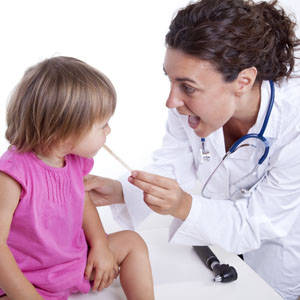 When a child has a temperature of 37.1-37.9 without symptoms, is it worth giving the baby any medicines or antipyretic medicines, or maybe you need to start right away with antibiotics? More and more often, such requests can be found on the Internet.
When a child has a temperature of 37.1-37.9 without symptoms, is it worth giving the baby any medicines or antipyretic medicines, or maybe you need to start right away with antibiotics? More and more often, such requests can be found on the Internet.
Child's temperature - how to lower it?
The water should be as warm as before, but you can keep the baby in it for a little longer. If you decide to use a pharmacological agent, it is recommended that you use paracetamol or ibuprofen for babies.
- The temperature of a newborn baby can be reduced by wrapping.
- Hairstyles can be applied to the chest, head, or comforting hands.
- Another way to combat fever in babies is to swim.
Parents want to help the baby on their own so as not to seek help from doctors. It should be warned right away that any self-medication may be wrong. As a result, you will not only not help the child, but also cripple his health. In the treatment of subfebrile condition, you need to follow the basic rules.
- Do not use antipyretics until the body temperature reaches 38.5 degrees... An exception can be made only for children with neurological diseases, hypoxia or birth injuries. Such children should be given an antipyretic agent already when the thermometer level approaches 38 degrees.
- If you are using antipyretics, then choose only those drugs that are intended to treat the child... Children from the first month of life can enter suppositories Cefekon D, from three months it is preferable to use syrups Ibuprofen, Calpol, Panadol, and from 6 years old Nurofen, Paracetamol tablets are allowed. Each drug contains an individual dosage corresponding to the child's age. Pay special attention to this.
- Antipyretic drugs are symptomatic... They remove low-grade fever, but do not in any way affect the cause of its appearance. Therefore, they do not carry out the treatment as such. To treat a fever in a child without additional signs, you need to consult a doctor and find out why it appeared.
- Any therapeutic measures should be started only after the doctor's permission... Be sure to repeat the measurement of the baby's body temperature. Perhaps it is normalizing within an hour after the overestimated indicators are fixed.
If this happened and the level of the thermometer did not increase more, then you can be sure of the full health of your child. It is worth seeking emergency help in a medical institution if the temperature continues to rise rapidly or the condition of the little patient is aggravated by additional symptoms.
If you notice any seizures or severe pain, or if the child is unable to tilt his head back, you should see a doctor immediately. These symptoms are already very disturbing. Post-vaccination fever is a so-called post-vaccination adverse reaction. This can happen after each vaccination, however, depending on the type of vaccine, it appears within two days or after a week. This is due to the response of the immune system to bacteria, viruses, or fragments contained in the vaccine.
Condition after immunization after vaccination
When they enter the body, they start producing protective antibodies and immune cells. But note - the absence of fever does not prove that vaccination is ineffective. In up to half of children, within two days after vaccination, the body temperature can rise to 37, 5-38, 5 degrees Celsius. Men may be weak and have no appetite. The state of fever does not require intervention - the child does not need to be given any antipyretic drugs, you do not need to go to the pediatrician with him. The temperature usually disintegrates spontaneously within the next 48 hours.
Jun 17, 2017 Julia Astafieva
The child's temperature was, is and will be the cause of the parents' worries. Many mothers treat fever very painfully, starting to worry, panic, or even call an ambulance. As for its high indicators, then 99% of mothers have one solution - the use of antipyretic drugs. But what to do when the child's temperature is 37 ° C? It is extremely important here to take the necessary and, most importantly, the right measures. It is important that you remain calm and not give in to nervousness. If the child's temperature is 37 ° C, then this is not a reason for panic, but a signal that a virus has entered the body. The temperature itself is a very necessary parameter, which clearly shows that there are health problems.
Temperature reasons
The child's temperature of 37 ° C should alert parents. If this is a one-time occurrence, then the cause may be excessive physical activity of the baby during the day. Usually in such cases, the temperature rises in the evening. After stress, anxiety or fear, the body can also respond with an increase in temperature. In an easily excitable child, after a day full of emotions, the temperature can rise to 37.2-37.5 ° C (strangers in contact with the baby, loud sound, bright light, new impressions after going to public places can be stressors). Do not forget that temperature often accompanies cutting teeth, and is also a reaction to vaccination. Often, after the introduction of complementary foods, parents focus on protein nutrition, which, with an insufficient amount of fluid in the body, can lead to protein fever accompanied by an increased temperature.
Temperature as a cause for concern
A cause for concern is a temperature of 37.2 in a child in the morning, accompanied by other symptoms:
- A fever cough is an indicator of an upper respiratory tract (whooping cough, false croup, pneumonia, bronchitis, laryngitis).
- Runny nose, headache and a temperature of 37.5 in a child indicates the presence of ARVI. In this case, you should not try to bring down the temperature if the child's well-being can be described as normal.
- Abdominal pain, vomiting, and diarrhea, accompanied by fever, indicate food poisoning. In no case should the temperature be brought down - the body is fighting the infection. In this case, immediate specialist assistance is required.
- Unstable stools and poor appetite are signals of dysbiosis when the body raises its temperature due to the absorption of toxins into the bloodstream.
- Rashes on the skin, redness of the cheeks indicate intolerance to certain foods (diathesis).
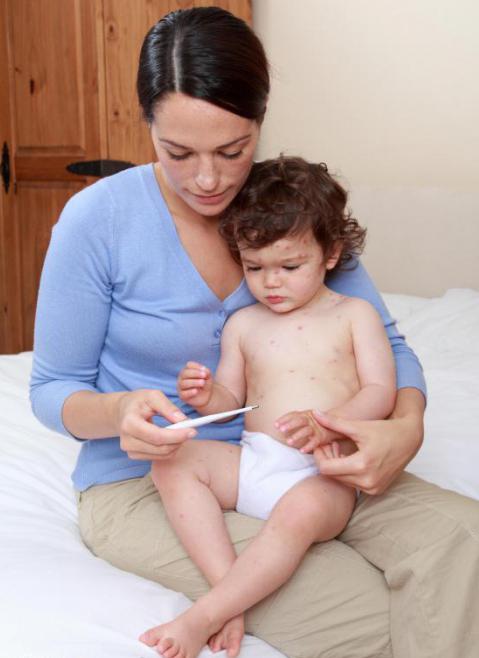
In order to avoid dehydration, a child with a fever needs to drink more. It is best to give mineral or boiled water, compote, tea. If the child's temperature is 37 ° C for a month, parents should be alert: this may be a sign of tuberculosis, iron deficiency anemia, herpes, or the presence of a rheumatic process. You should not exclude the individual characteristics of each organism, when an elevated temperature is the norm for a baby.
Fever in a newborn
When month old baby temperature 37 ° C in the absence of other symptoms, then there is no reason for panic. Scientists have found that in many newborn babies, this is an absolutely harmless phenomenon. At this age, temperature jumps from 36.5 ° C to 37 ° C are the norm. The system of autonomous thermoregulation is formed up to three months, the baby's body is just beginning to adapt to new conditions for him, and he cannot immediately establish a constant body temperature. The sweat glands are not sufficiently developed, it is difficult for the body to cool itself. After the baby has eaten or cried, the temperature will certainly rise slightly. It is worth starting to worry if the child has a temperature of 37, 2 for more than a day against the background of its usual lower indicators.
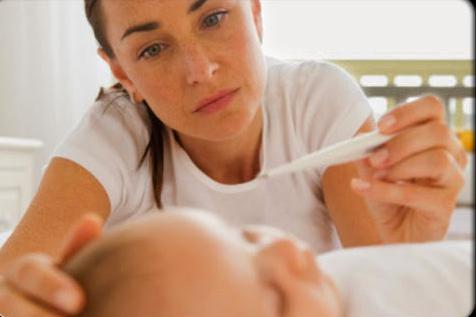
Ways to lower the temperature
Methods for lowering fever in a child are divided into two types: medication and non-medication. In the first case, it is necessary to weigh well the need to give the baby antipyretic drugs, a specialist consultation will also not be superfluous. As medicines, the baby is suitable for funds that include ibuprofen or paracetamol (it is better to inject drugs rectally in order to avoid drug exposure to the stomach walls).
Non-drug methods are physical cooling. They are welcome if the child's temperature is 37 ° C. The newborn should be undressed, the diaper removed, the chest and back are rubbed with vodka and left to lie down for about 10 minutes. However, many mothers and doctors themselves sometimes have a negative attitude towards rubbing the baby with alcohol. Sometimes it's enough to put the cold in armpits, put a cool compress on the forehead. A child with a temperature must be soldered with boiled water if he is artificially fed. If he is receiving breast milk, then he does not need to drink water.
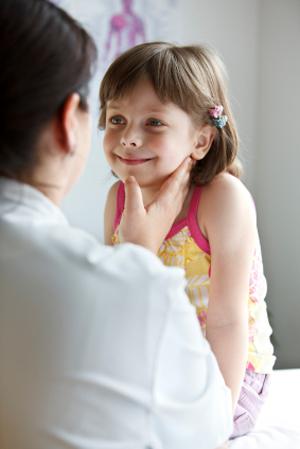
The need to visit a doctor
In the absence of additional symptoms, it is possible not to see a doctor for the first two days. It will be difficult for a specialist to make a correct diagnosis. The main thing that parents should do is observe the child. The following data will greatly help in making a diagnosis:
- change (or stability) in appetite;
- behavior change;
- fluctuations in temperature throughout the day.
The first days are the incubation period, during which characteristic symptoms appear in the presence of a specific disease.
On the third or fourth day, if the child still has a temperature of 37 ° C, it is worth visiting a doctor who will refer the child for blood and urine tests, if he suspects a urinary tract infection.
Is it worth lowering the temperature
The child's temperature 37.5 does not require a forced lowering. At elevated temperatures, the body produces a special protein and a natural antibiotic - interferon, which kills 90% of possible viruses. It is important to remember that interferon is produced only on the third day.
An amendment should be made only for the individual tolerance of the increased temperature. If the temperature causes too much discomfort, then, taking into account the ratio of the consequences and possible harm to health, sometimes it is possible to recommend still bringing down the temperature of the child.
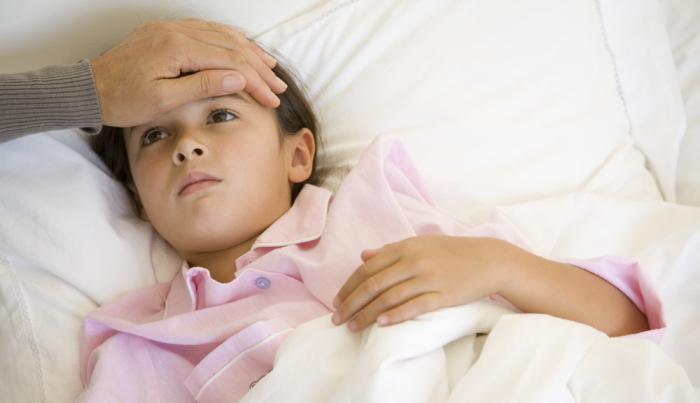
Is bed rest necessary?
When the baby is awake, the presence of a low temperature should not be the reason for a violent change in his mobile lifestyle. Regardless of whether bed rest is observed or not, the body continues to fight the infection, but forcibly sending the child to bed will definitely negatively affect his emotional state, and as you know, positive emotions are the key to a speedy recovery!

